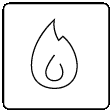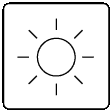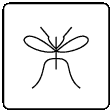
Security

Cyclone

Fire Safety

Energy

Corrosion

Insect Protection

Access Control

Fall Prevention

Security
ForceField® Security

Dynamic impact test
The Test
The dynamic impact test is designed to simulate an intruder trying to kick their way through a security door or window. The test is performed with a bag full of lead shot and sand, weighing more than 40 kg. The bag is smashed into the security screen with a force of 100 joules. The test is repeated 5 times. View video.
The Result
Passed. The dynamic impact test is not much of a challenge for a ForceField® security door or window. During cyclone testing ForceField® has survived more than 16 times the force.
Your Benefit
You will always feel secure behind a ForceField® security screen. It passes the Australian Standard for dynamic impact with ease – it has withstood forces that no human could apply.

Jemmy test
The Test
The jemmy test is designed to simulate an intruder using a lever to get past the security door or window. The test is performed with a large screwdriver at all locking, hinging and fastening points. The force applied is up to 450 N (45 kg) for 20 seconds – way beyond the capability of most potential intruders. View video.
The Result
Passed. The dynamic impact test left no gap to insert the screw-driver, so the jemmy test couldn’t even be performed on the ForceField® security window! All ForceField® security doors passed the test easily – all locking and hinging points were secure after the test.
Your Benefit
Even armed with a large screwdriver or similar, potential intruders won’t get past a ForceField® security door or window.

Pull test
The Test
Imagine an intruder trying to pull out your security screen…that’s what the pull test is all about. The security door or window must be able to withstand pulling forces of up to 2 kN (200 kg) for 20 seconds at various positions.
The Result
Passed. The mesh in a ForceField® security screen is so fine that there is nothing to grab. Even after the dynamic impact test and the jemmy test, there is no gap between mesh and frame on the ForceField® security doors and windows either. The test lab has nowhere to pull so the test is over before it begins.
Your Benefit
Good luck with trying to pull out a ForceField® security door or window. If the test lab can’t find anywhere to pull, a potential intruder has no hope.

Probe test
The Test
The probe test simulates an intruder having created a gap and trying to get his hand inside to unlock a door or a window. A deflecting force of 1.5 kN (150 kg) is applied to each opposite side of the opening to increase the space enough to get a hand through.
The Result
Passed. This test simply can’t be performed on a ForceField® security door or window because the aperture in the mesh is less than 2 mm x 2 mm, far less than the test requirement of a 213 mm diameter probe.
Your Benefit
The mesh in ForceField® security doors and windows won’t allow an intruder to get his hand inside to unlock a door or a window.

Knife shear test
The Test
The knife shear test simulates a knife attack on your security screen. A heavy duty trimming knife is dragged along a 250 mm line with a force of 150 N (15 kg) vertically and up to 350 N (35 kg) horizontally. The test is repeated 3 times – each time with a new blade – along the same line.
The Result
Passed. To pass this Australian Standards test, continuous penetration of less than 150 mm is required. The knife shear test hardly leaves a scratch in a ForceField® security door or window.
Your Benefit
Even a strong burglar with a heavy duty trimming knife and 3 fresh blades won’t stand a chance of getting past a ForceField® security door or window.

Shear test
The Test
Cutting pliers are popular tools among burglars. The shear test simulates a cutting plier attack on a security screen. The shearing tool applies increasing pressure until the sample strand breaks. The force required to break one strand must be at least 3 kN (300 kg).
The Result
Passed. The test simply can’t be performed on a ForceField® security door or window because the mesh is too tightly woven for the pliers to get a hold. But – for the record – the average breaking point of a strand exceeds the standard by more than 60%.
Your Benefit
A potential intruder armed with cutting pliers will be disappointed with your choice of security screen. There’s no way the pliers will get a hold.

Cyclone
ForceField® Cyclone

Australian Standards test (AS/NZS 1170)
The Test
The cyclone test consists of a missile test and a ballistics test. In the missile test, a 4 kg timber block is smashed at the security screen. View video. In the ballistics test, 5 steel balls with a diameter of 8 mm weighing two grams each are fired at the security screen.
The Result
Passed. During the missile test, ForceField® withstood a 65 km/h corner impact and centre impacts at speeds of up to 104 km/h. The force of the centre impacts reached 1,659 joules – 16 times more than what is required to pass the Australian Standards dynamic impact test! The steel balls in the ballistics test reached speeds of up to 178 km/h without penetrating the mesh.
Your Benefit
The results of the cyclone test gives you confidence that the ForceField® security screen is the strongest residential security screen on the market. Few if any other standard residential security screens have passed this gruelling test.

US Hurricane & pressure cycle test (AAMA 506-06/ASTM E1996/ASTM E1886)
The Test
The US Hurricane & pressure cycle test consists of a missile test and a pressure cycle test. The missile test (Level D) smashes a 4.1 kg piece of timber at the security screen at an impact speed of 54 km/h. The same security screen is then air pressure cycled – simulating various wind directions and wind speeds – 9,000 times at intervals of less than 5 seconds.
The Result
Passed. Neither test caused any problems for ForceField®. The missile test is less gruelling than the Australian Standards test, which was passed easily. The pressure cycle test report simply states that ‘the specimen showed no resultant failure or duress after cycle testing’.
Your Benefit
The US Hurricane & pressure cycle test adds further evidence to the fact that the ForceField® security screen is the strongest residential security screen on the market.

Fire Safety
ForceField® Fire Safe Security Screens

Bushfire
The Test
The Australian Standard for construction of homes in bushfire prone zones (AS 3959) simply states that openable windows must be screened with corrosion-resistant steel, bronze or aluminium mesh with an opening of less than 2 mm x 2 mm
The Result
With stainless steel mesh, ForceField screens are approved up to the extreme Bushfire Attack Level BAL-FZ.
Your Benefit
ForceField screens are suitable for bushfire prone areas.

Fire Attenuation Test FSZ 1552a
The Test
Prowler Proof asked CSIRO to expose a ForceField® window screen to a radiant heat flux level of 60 kw/m2 for a minimum of 60 minutes. Most bushfires will create heat levels of around 40 kw/m2 and will pass within minutes.
The Result
After 91 minutes the window screen was still in position and it was decided to terminate the test. Throughout the test the heat level measured one metre behind the unexposed face of the window screen was approximately 10% of the level measured at the exposed face of the window screen.
Your Benefit
Even during a fire ForceField® will protect you. It will not only stay in place. Just one metre inside your home, the heat will be reduced by approximately 54% compared to the heat outside at the surface of the screen.

Energy
ForceField® Energy & UV light

Window Energy Rating Scheme
The Test
ForceField® is one of very few Australian security screens that has been WERS tested for both residential and commercial applications.
The Result
Depending on application, ForceField® reduced solar heat gain and UV light by up to 67% (WERS rating 5 stars). Reduced heat loss was up to 28%, resulting in a 3 star WERS rating.
Your Benefit
Prowler Proof ForceField® security screens will not only help you keep cool in summer, they will also help you stay warm during winter.

European Standard EN 14501
The Test
The solar properties of ForceField® was tested to the European Standard EN 14501 at a testing facility in the UK.
The Result
With a solar and ultraviolet transmittance of only 43%, ForceField® keeps 57% of solar heat and damaging UV light out of your home.
Your Benefit
Decreasing solar heat gain by 57% means that you can keep your home cooler in summer, reducing the need for air conditioning as well as your power bill.

Corrosion
ForceField® Corrosion

Acetic acid salt spray test (AS 2331.3.2)
The Test
The 1,000 hour acetic acid salt spray test is pure torture for a security screen. Acetic acid salt spray is not only saltier than sea water, it’s also 10,000 times more acidic. The test takes place in an enclosed chamber at a temperature of +35ºC with almost 100% humidity.
The Result
Passed. ForceField® is one of only two complete security screens on the Australian market to pass the acetic acid salt spray test – Prowler Proof Protec is the other. ForceField’s 316 marine grade stainless steel mesh has survived a 10,000 hour neutral salt spray test as well.
Your Benefit
If you live in a coastal area or near industrial areas, corrosion is your security screen’s worst enemy. Prowler Proof is your safe choice. No other brand of security screen has passed the 1,000 hour acetic acid salt spray test. No other brand is covered by a 10 year replacement warranty.

Neutral salt spray test (AS 2331.3.1)
The Test
ForceField® has been tested to the Australian Standard 2331 which requires the product to survive a 1,000 hour neutral salt spray test. This test is an accelerated corrosion process that takes place in an enclosed chamber. The spray is saltier than sea water and the temperature is maintained at +35ºC with almost 100% humidity.
The Result
Passed. ForceField® is one of very few complete security screens that have passed the test – most manufacturers only test the mesh. ForceField’s 316 marine grade stainless steel mesh has actually survived a 10,000 hour salt spray test.
Your Benefit
Prowler Proof is the most corrosion-resistant security screen on the market. Quite simply because it is welded instead of being held together by screws or rivets. Whenever two different metals interact there’s a risk of corrosion.

Insect Protection
ForceField® Insect Protection

Mosquito protection test
The Test
In the absence of a relevant Australian test, the test was conducted in Thailand with dengue fever mosquitoes – a species native to Australia. The security screen was measured by its ability to keep mosquitoes away from a food source.
The Result
With 600 mosquitoes bred in a small cage, only one (1) managed to get through to the food source within 24 hours. At the completion of the test (72 hours) only two (2) mosquitoes had passed through the ForceField® screen.
Your Benefit
ForceField® security screens keep almost everything out. Even tiny insects like dengue fever mosquitoes can’t find their way through the 1.5 mm x 1.6 mm openings in the mesh.

Access Control
ForceField® Access Control

Fall Prevention
ForceField® Fall Prevention
Bexley Floors & Blinds
- Address: 15/385 Forest Rd, Bexley NSW 2207, Australia
- Phone: 02 8065 4152
- Mobile: 0414 883 623
- Mail: Bexley Floors and Blinds

